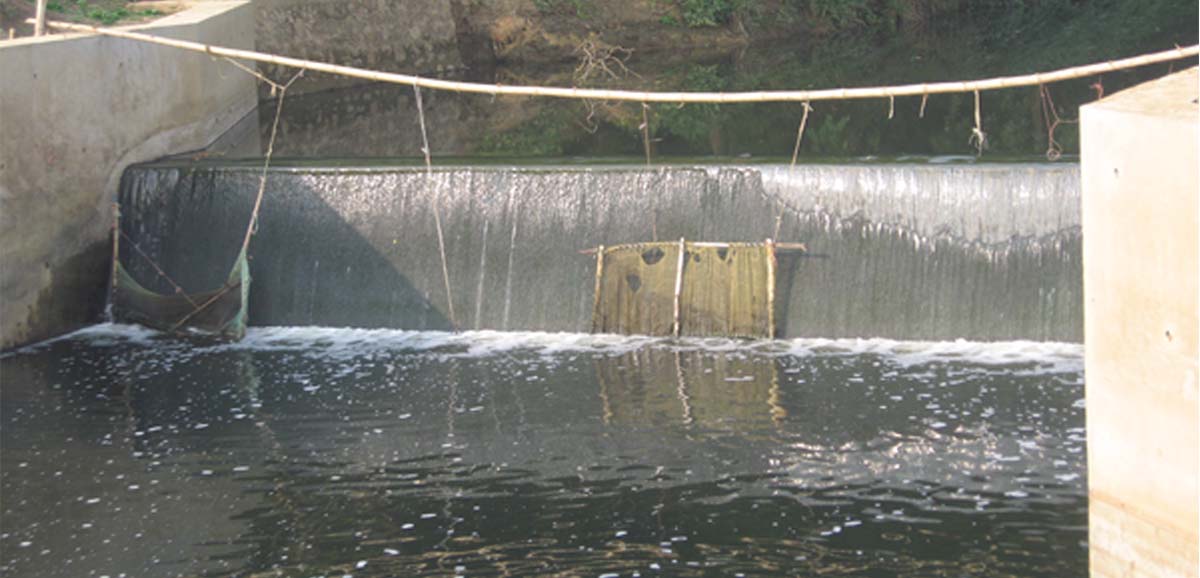The Bengal Forest Department has taken several significant steps for the conservation of forests. The festival of Vanmahotsav, organised by the State Government every year for a week from July 14, is an important step towards raising awareness about forests and natural resources.
This year the Government is giving away 50 lakh saplings to elected representatives and educational and other institutions across Bengal, to plant on the occasion.
The principal achievements of the Forest Department for the conservation of forests are listed below:
Banabandhab Utsav: Banabandhab Utsav is held in the districts, involving the Joint Forest Management Committees (JFMC), to boost up the protection of forests in the State. Activities held during the festivals include distribution of Forest Protection Committee (FPC) shares, giving books to meritorious students, organising cultural functions and, in some cases, acknowledging the good works of the FPC members.
Sabujshree: The Sabujshree scheme provides saplings to every newborn child. It was launched in 2016 to inculcate emotional bonding between child and nature and also provide an incentive for the future (the trees can be sold after the child attains 18 years of age to provide for educational and other needs). Till date, about 17 lakh newborns have been distributed seedlings.
Jalatirtha: This scheme is operational in the district of Purulia and in some parts of Bankura. It is being implemented in highly water-deficient areas. Check dams are being constructed in the upstream and downstream of major river catchment areas to check runoff velocity, erosion of top soil and stabilisation of downstream areas. Thirty-six projects in the forest areas of Bankura and Purulia have been completed.
West Bengal Forest and Biodiversity Conservation Project: The West Bengal Forest and Biodiversity Conservation Project (WBFBCP) was started in 2012. It is being implemented in 600 JFMCs. From FY 2014-15 to 2017-18, 18,775 hectares (ha) of plantations have been created under the scheme while for 2018, the target is 2,995 ha. Under the project, biodiversity studies have been initiated to study the population dynamics and habitat management of the elephant, leopard, tiger and gaur. Community development work in 210 JFMCs in the form of infrastructure and asset creation, and micro-financing, has been initiated.
West Bengal Forest Development Corporation Ltd: West Bengal Forest Development Corporation Ltd. (WBFDCL) has broadened its area of activity and gone hi-tech in several major activities. The corporation has initiated the greening of south Bengal, aiming 30,000 ha of plantation in wastelands over the next 10 years in partnership with the villagers. Lac cultivation is being implemented for the uplifting of forest fringe populations. This would benefit about 4,000 families. The corporation runs 19 eco-tourism centres; new ones are being constructed in Samsing (Kalimpong district), Tajpur (Purba Medinipur) and Lodhasuli (Jhargram). Besides, a Nature Interpretation Centre is being built at Ilambazar in Birbhum district to accommodate the plant fossils excavated near Bolpur.
West Bengal Wasteland Development Corporation Ltd: The West Bengal Wasteland Development Corporation Ltd. (WBWDCL) has contributed towards the development of Eco Park (Prakriti Tirtha) in Rajarhat, and the landscaping and beautification of the Salt Lake Stadium (Vivekananda Yuva Bharati Krirangan), underneath a portion of the Maa Flyover, and in the campuses of ECL, DVC, and the Mejhia and Raghunathpur power stations. The organisation has also contributed towards the beautification of areas within Kolkata Port Trust, and the promotion of angling at Banabitan Biodiversity Park, Salt Lake.
Conservation of medicinal plants: The Research, Monitoring & Development (RMD) Wing of the Forest Department has launched 14 Medicinal Plant Conservation Areas and schemes for the socio-economic uplifting of JFMCs through medicinal plants, and their value addition and marketing. The wing has developed nursery protocols for nutrient supplements, and media and environment protocols.
It has renovated the nurseries in Arabari and Sarugara, the soil testing laboratories in Medinipur and Sarugara, the Llyod Botanical Garden in Darjeeling and the ex situ medicinal plant germplasm conservation area in Amlachati, Jhargram. To ensure ex situ conservation, 435 ha of medicinal trees, herbs and shrubs have been created in south Bengal with the active involvement of JFMCs.
Presently the wing is standardising the tall seedling nursery protocol and working on forest division-wise soil mapping. The RMD Wing has also published research work – a book of 600 medicinal plants of south Bengal.
West Bengal State Forest Development Agency: The West Bengal State Forest Development Agency (WBSFDA) was set up in 2014. It is creating a new mechanism for the implementation of the National Afforestation Programme and Rashtriya Krishi Vikas Yojana-Remunerative Approaches for Agriculture and Allied sector Rejuvenation (RKVY-RAFTAAR). It is also working as the nodal unit for facilitating eco-tourism initiatives in the State, including the online booking at 19 eco-tourism centres.
GIS-assisted forest management: The Forest Directorate scientifically manages the State’s forest areas using geographic information system (GIS), as per the Working Plans of the various forest divisions. The Forest Department has introduced latest technologies like ArcGIS, ERDAS image processing software, AutoCAD Map 2000 software and Geo Media Professional software for the preparation of the Working Plans as per the National Working Plan Code 2014.
Thus we find that the State Government has been taking a lot of measures for effectively managing the forest areas of Bengal. As a result, forests in the State are thriving, making Bengal one of the best in the country in terms of managing and increasing forest (both natural and planted) areas.
Source: 7 Years: Chronicles of Bengal’s Progress




